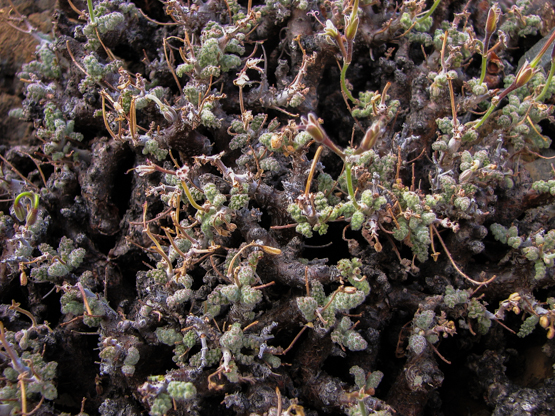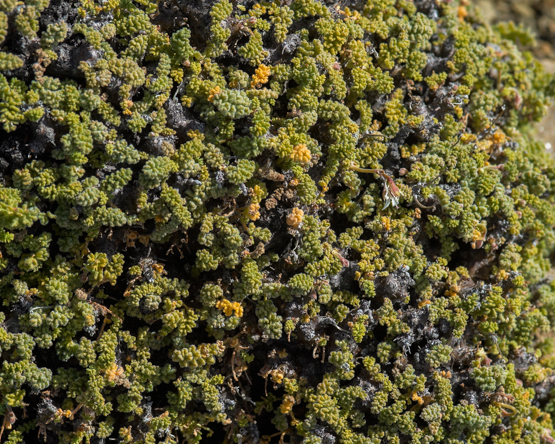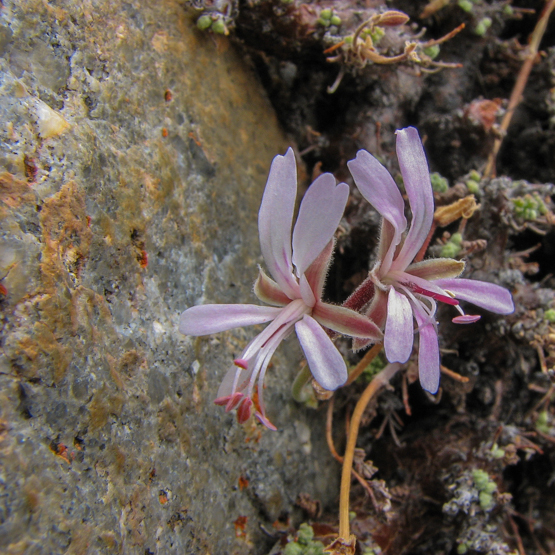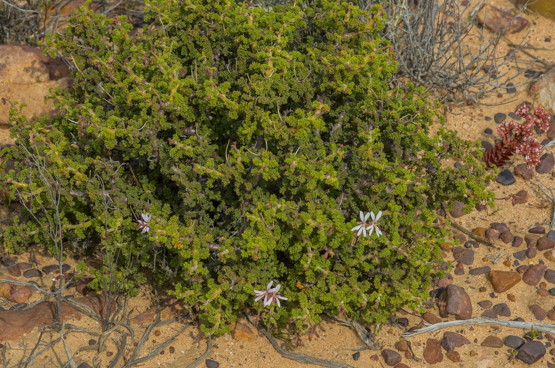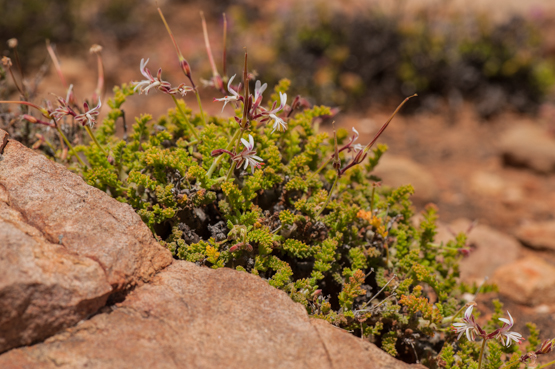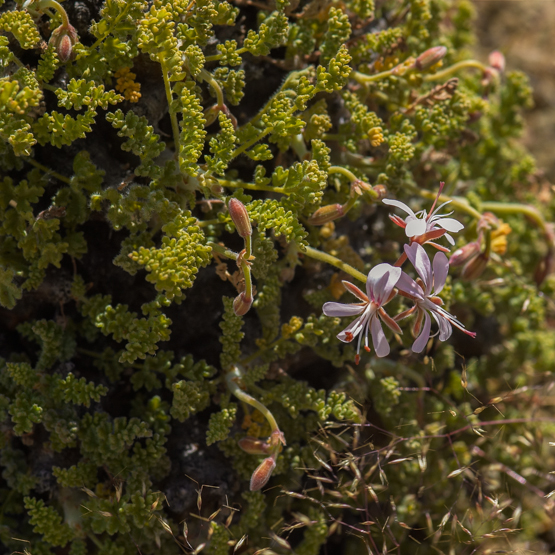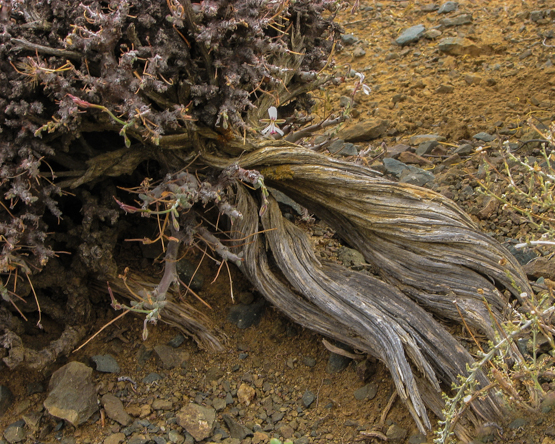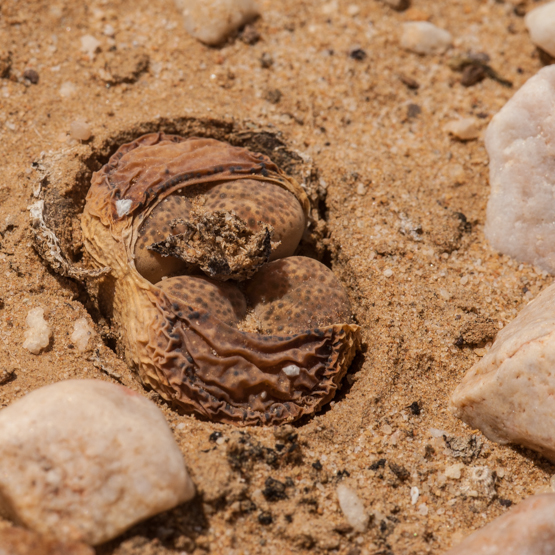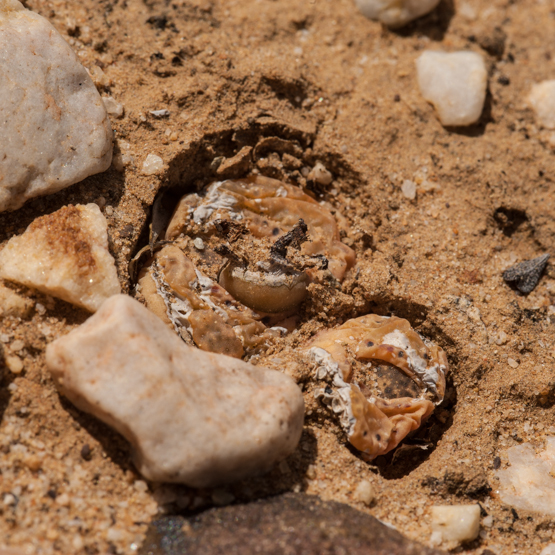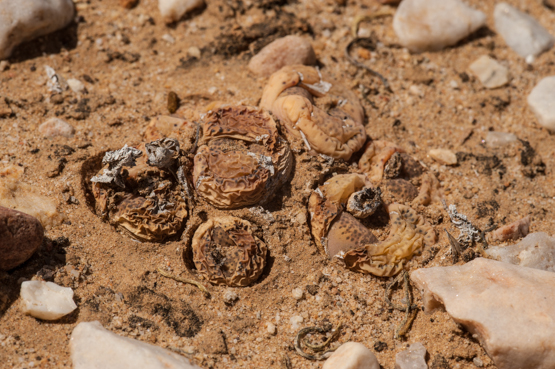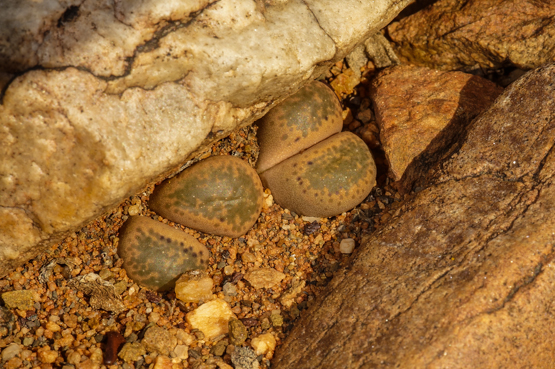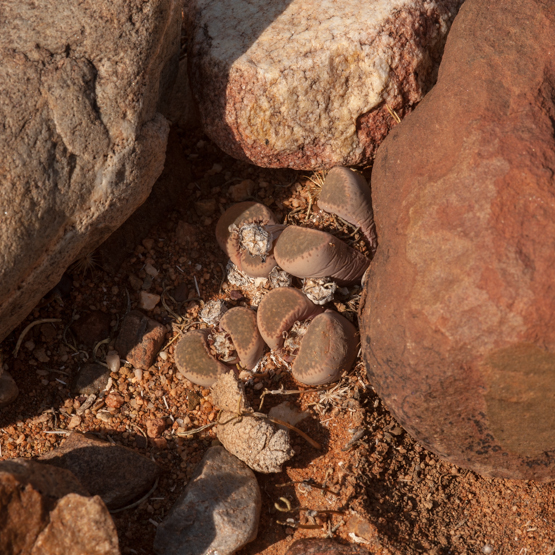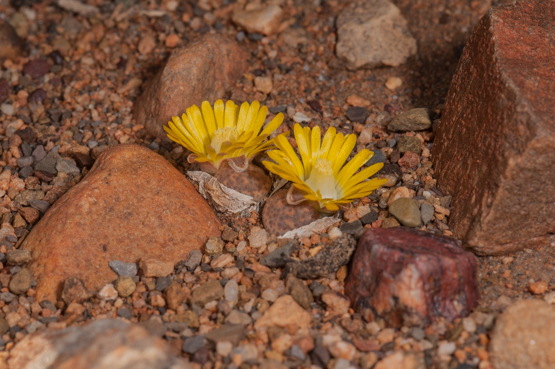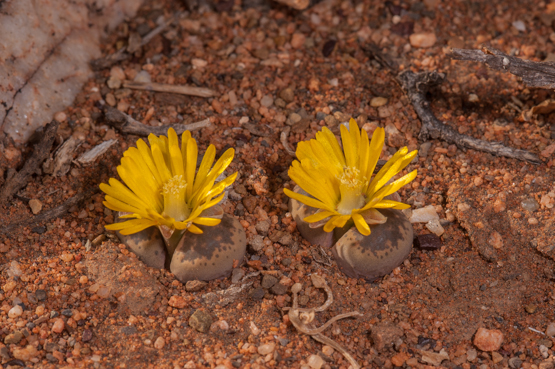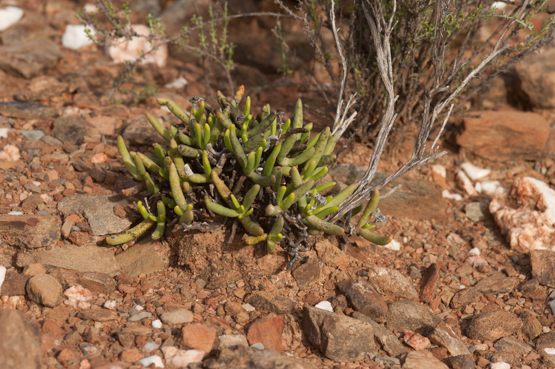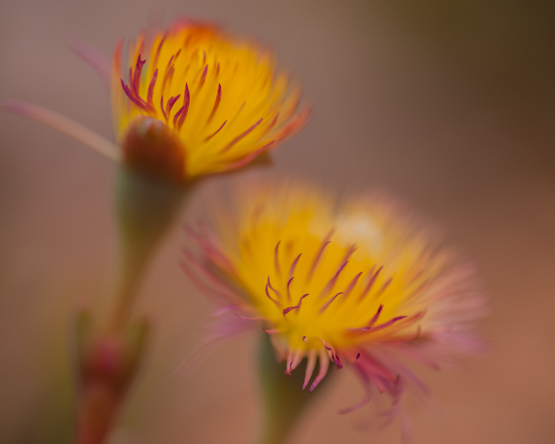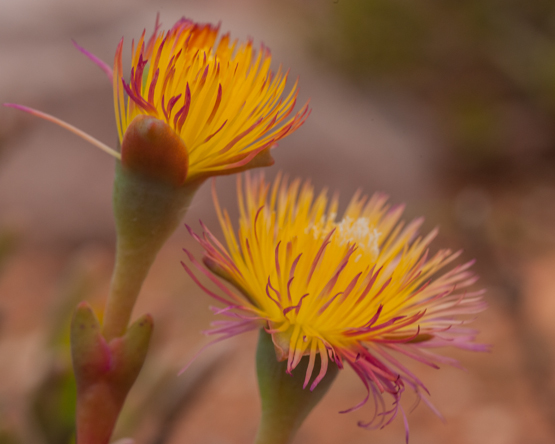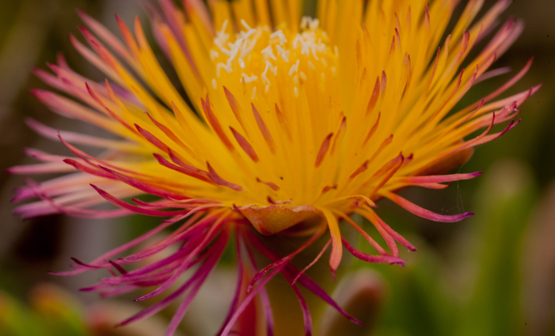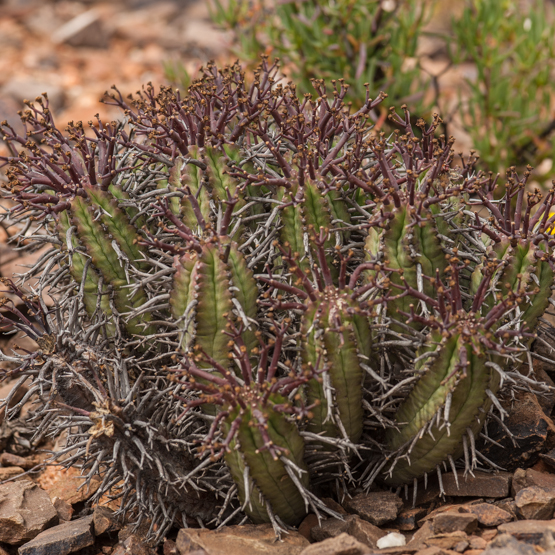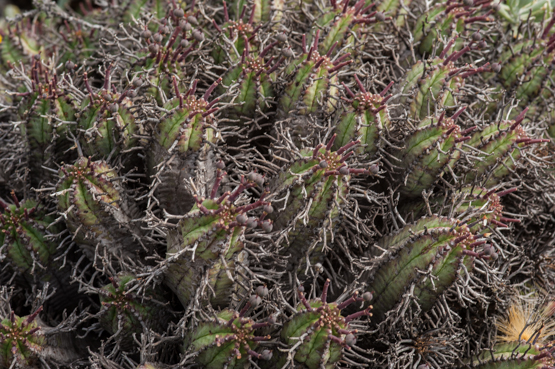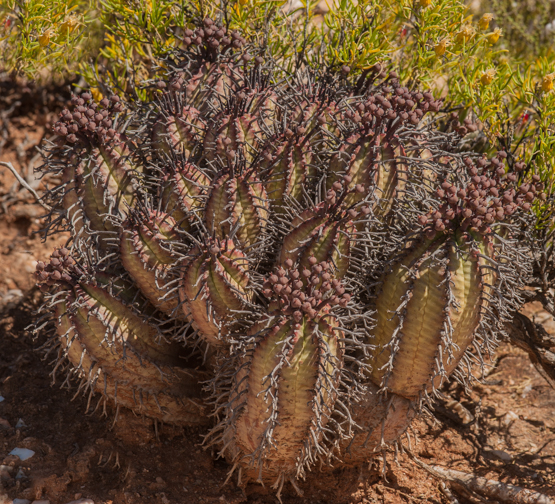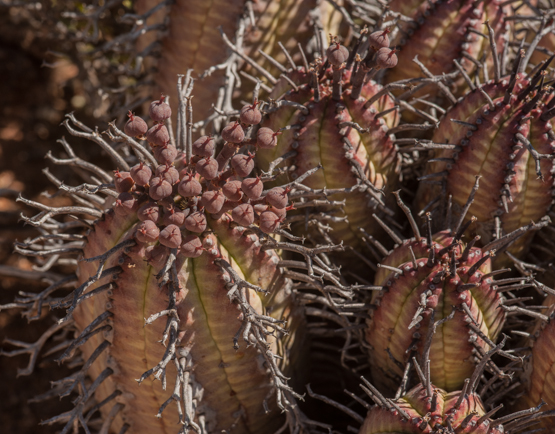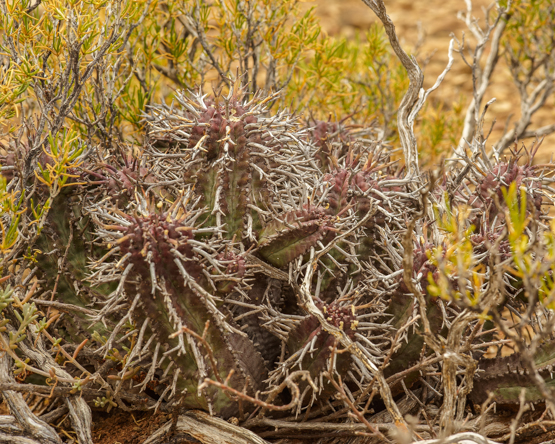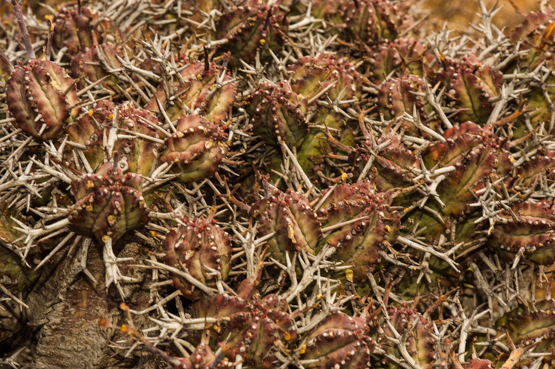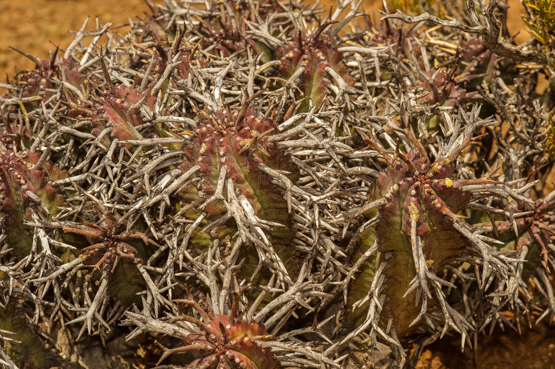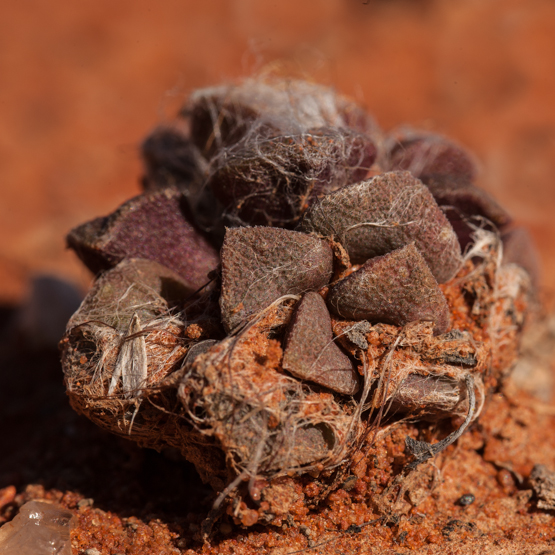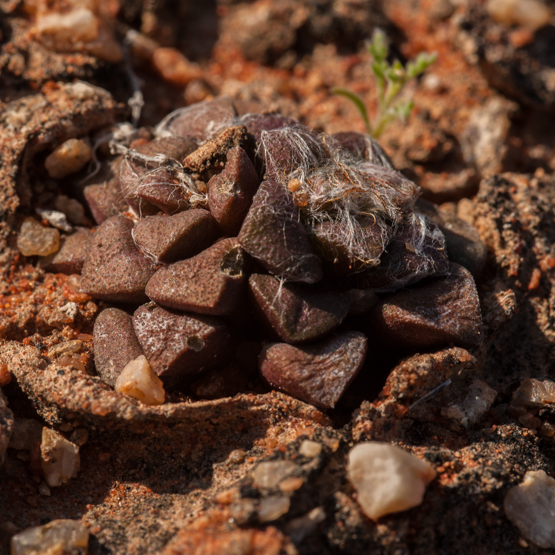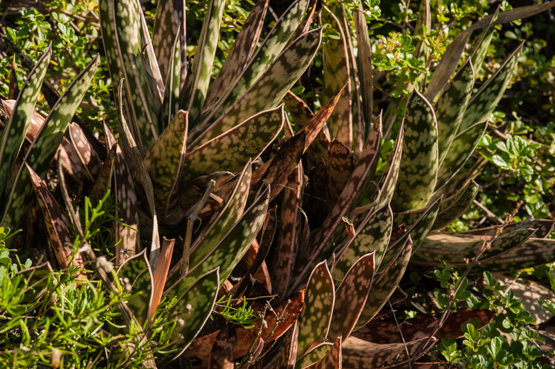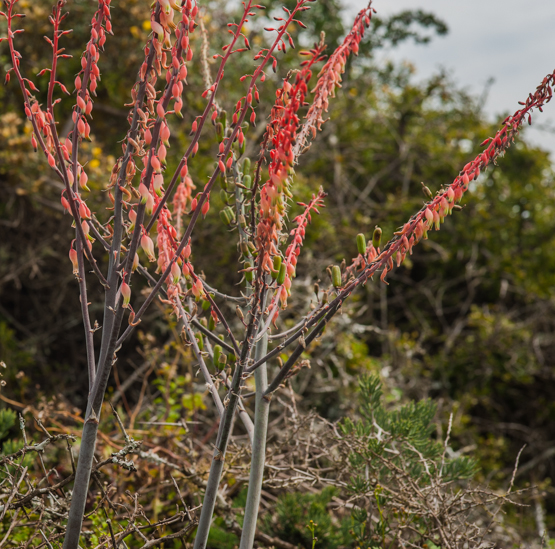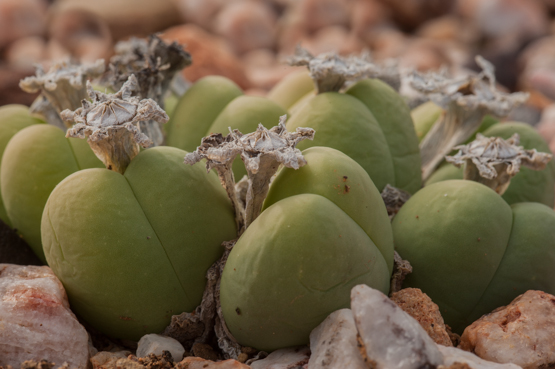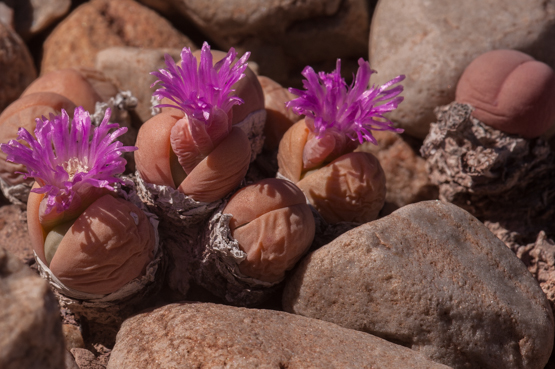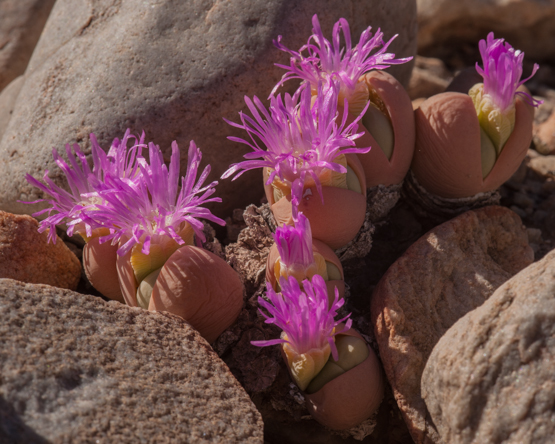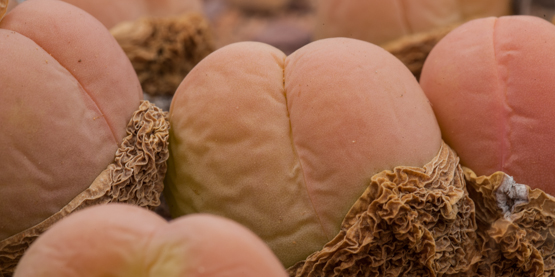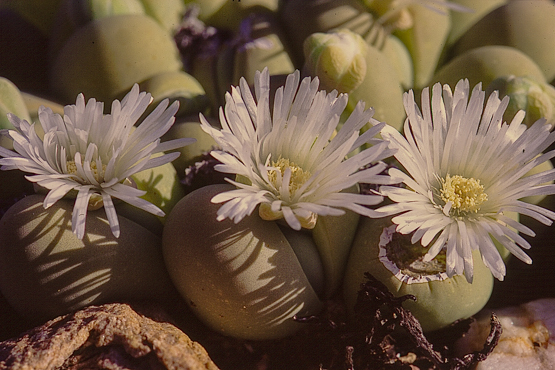Tag: South African succulents
Pelargonium alternans (1)
One can come across this species from the Bokkeveld Mountains to near Prince Albert on sandstone, shale and quartz slopes and outcrops. The rainfall in this area is between 100 and 200 mm a year, mainly during winter. Although the summers are very hot, there is often some frost in winter.
The plants may become up to 40-50 cm tall and wide and can apparently get very old. (See picture 4)
Flowering is mostly from April to January, but may occur at any time after rain.
Lithops localis (2)
Lithops localis (1)
This is the Lithops species with the most southerly distribution area of the whole genus, in the lower Great Karoo from Laingsburg to Steytlerville. It is easily recognized because of the very dense pattern of miniature windows. Mature plants usually have 2-5 bodies, but may occasionally have more than twenty. They flower in April and May.
The naming of the species is a very confusing issue; suffice it to say here that the name L. terricolor is also in use.
All pictures below were taken on the Witteberge plateau south of Laingsburg, very near to the type locality.
No 1: 4 Sept. 2011; no 2: 29 July 2010; nos 3, 4: 21 April 2012
Hereroa odorata
Not many people will get excited, I suppose, by a plant like the one in the first picture.
But when you see the flowers you might well change your opinion. The first two pictures below seem to be exactly the same. In fact there is a small but not unimportant difference: the first of them was taken with the lens wide open (F2.8), whereas in the second one a smaller aperture was used (F11). To me the first of the pair has a rather more dream-like atmosphere. What do you think?
In the last one the camera was tilted to give a better view of the beautifully coloured outer petals.
In all species of Hereroa the flowers open in the afternoon or even later. (The pictures were taken at about 5 pm).
Euphorbia pillansii (2)
Euphorbia pillansii (1)
On seeing plants of this species for the first time, one would be excused for thinking they belong to E. stellispina (see earlier post). E. pillansii is smaller (up to 30 cm tall instead of up to 50 cm or more) and the stems have fewer angles (7-9 compared to 10-16). The plants are either male or female and occur sporadically from Ceres to Vanwyksdorp in the Little Karoo on stony, clayey soils.
The pictures were taken 7 Febr. 2009, west of Ladismith.
To be continued.
Anacampseros retusa
Gasteria bicolor v. bicolor
This plant is widely distributed in the eastern Cape and is typical for the subtropical thicket of the area. I has a short leafy stem up to 20 cm tall and slightly twisted leaves with a sharp off-center tip.
The inflorescence is quite impressive: 1-1.5 m tall, with up to 8 side-branches.
Pictures taken near Uitenhage, 25 Oct. 2012

